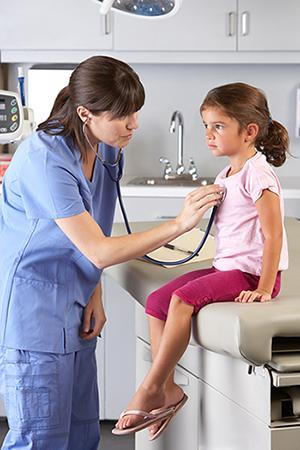While no one wants to think about their child becoming a pediatric burn victim, unfortunately, accidents do happen. This is why, in addition to doing your best to limit your child's burn risk, you will also want to know just what to do in an emergency situation. Here are the steps the  pediatricians at Spectrum Pediatric Group in Kennesaw recommend.
pediatricians at Spectrum Pediatric Group in Kennesaw recommend.
1. Eliminate the Source of the Burn
If your child has been burned or scalded, your first priority should be to put out the fire or remove them from the scalding water or object. Get your child away from the source of the burn.
2. Assess the Damage
After ensuring that the fire is out, or the scalding object is in a safe place where it won't hurt anyone else or create a fire or other further danger, begin to treat the burn immediately. To do this, you will need to know what type of burn it is.
First-degree burns are typically characterized by redness, swelling and pain. Second-degree burns are typically characterized by the redness, swelling, pain, blotchy spots, and blisters. Third-degree burns, which affect all layers of skin, are typically characterized by severe tissue damage, difficulty breathing, and shock.
3. Seek Medical Attention, if Necessary
First-degree burns can be treated at home. For second degree burns, call your doctor of pediatrics at Spectrum Pediatric Group in Kennesaw. For third degree burns, call 911 immediately.
4. Remove Constricting Items
Burns can swell quickly. If your child is wearing a tight belt, watch or piece of jewelry, remove it before the area swells up.
5. First Degree Burns: Cool the Area
For minor burns, run the burn under cool (not cold) water to cool the area and relieve the pain. An over-the-counter pain medication can be used to help relieve pain as well. Do not immerse third degree burns in cold water as this can cause a serious loss of temperature, shock or even infection.
6. Second Degree Burns: Protect the Burn
With second and third degree burns, your child runs the risk of an infection since the skin is open. For second degree burns, carefully wash the area with tepid water and bandage with a sterile, non-stick bandage to keep the area from becoming infected.
7. Third Degree Burns: Elevate the Area
If your child is badly burned, you will not want to tamper with the area once the fire is out, lest you cause more damage. Instead, lay your child in a comfortable position and raise the burned area above heart level until the paramedics arrive.
Burns are always scary, especially when they happen to your child. Thankfully, when you know what to do, you are much better prepared to act and help your child recover quickly. For further questions about burns or other pediatric health concerns, call Spectrum Pediatric Group in Kennesaw today.

